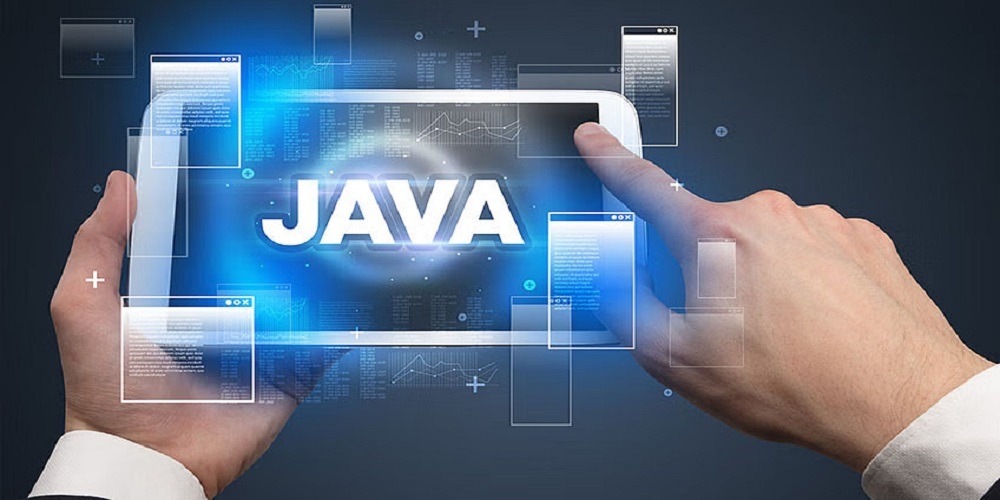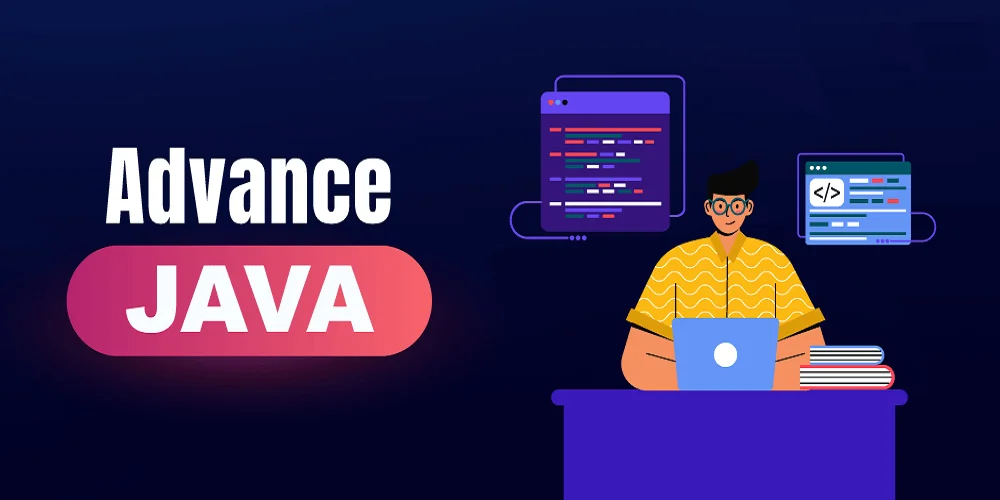Introduction: JAVA for the Internet of Things
Java and the Internet of Things are brilliant connections that have always been here to stay. Why is that? The reason is Java has offered a solid foundation for several developing techs ever since it was first developed, and the IOT is not an exemption to this rule.
As per the research, Java offers a variety of advantages, and as a result, it is a perfect option for the Internet of Things. One of the benefits of IoT development and Java is that, unlike other programming languages, it allows you to create the code just once and then use it to make it work everywhere. Since Java is quite a widely used programming language, it is also one of the languages that has the major community and quiet resources available. This makes it easy to hire remote Java developers who are professionals.
Since 2018, Eclipse has surveyed Internet of Things developers of all users of the world to get a better understanding of the ecosystem, tendencies, and current problems in the sector. Java is the most extensively used programming language for Internet of Things development, as per the poll that was made in 2023. It constituted an astonishing 70.5% of the votes, making it quite a popular choice.
What is IoT?
The Internet of Things (IoT) is an idea that defines the procedure by which commonplace purposes and consumer gadgets, like simple washing machines, are digitized and linked to the website world. This brings up a wide variety of new chances. IoT devices, in particular, make it possible to fold and examine vast amounts of additional data, as well as to modify the functioning of the device for every individual user.
Along with a variety of technologies that are thoroughly associated with the Internet of Things (IoT), like home automation, video analysis, and artificial intelligence, the IoT idea is now being enthusiastically positioned. In the area of medicine, the Internet of Things (IoT) subfield is becoming more famous, as seen by the development of leading-edge gadgets that can monitor the health of patients who are connected in distant places. Many industries are now leveraging IoT solutions to enhance automation, streamline operations, and improve connectivity across various smart devices.
IoT and Java
Java’s built-in provision for concurrency makes it an outstanding choice for Internet of Things development, which includes the creation of devices that accompany one another and should repeatedly interact with each other. Java has helped as the foundation for the mainstream of the machineries that have arisen, and the IOT is no exception to this rule. However, individuals who are considering making the transition to the Internet of Things have a question about programming languages.
IoT might be implemented with the help of a wide variety of programming languages, including, nonetheless, not imperfect to C, C++, Python, and others. Therefore, you have the option to employ Java developers since Java provides programmers with an unrivaled advantage. Java’s adaptability and flexibility are two of the primary reasons why developers working on Internet of Things applications gravitate toward the language.
Java-based Internet of Things devices, some example
It is possible to discover various instances of Internet of Things devices that make use of Java’s capabilities to provide experiences that are both smooth and efficient. Java is capable of running on a wide variety of devices, independent of the kind of hardware or operating system that is used. Because of this, it is an outstanding choice for Internet of Things apps that include a variety of platforms and devices.
For example, Java for IoT is widely used in the making of smart home devices like thermostats, security cameras, and smart applications. As a result of its volume to handle involved features while concurrently assuring cross-compatibility, it is the product of choice for designers.
Java is beneficial to worn Internet of Things devices. Because of its low resource consumption and interoperability with a wide range of sensors, it is an ideal option for the delivery of novel wearable solutions. Connectivity between different devices, solid Internet of Things frameworks, and platforms that allow applications to be created on top of it are the most important factors in ensuring the effective adoption of the Internet of Things.
What is the importance of Java to the Internet of Things?

Image: u-next
The truth that Java is significantly simple and easier to use in contrast to different languages is one of the reasons why it is the language of selection used by developers. In addition to this, it releases data from any possible security issues that make it suitable for use on the internet. Choosing Java as the preferred option for Internet of Things developers is based on several different reasons. Nevertheless, let us take a look at some of the characteristics that make it possible to create IoT development with Java.
Independence from the Platform
To design an embedded application, it is necessary to take into consideration the real-time operating system, the CPU, and the many protocols that are used to link devices. The fact that a language that is not reliant on any particular platform, such as Java, can summarize all of these elements makes it easier for developers to create code just once and then execute it anywhere. It is possible to operate the Java-based artificial intelligence application that was produced on a variety of hardware devices and platforms without having to modify the code. It facilitates the implementation of Internet of Things applications using Java, making it more effective and less laborious.
Adaptability and a Simple Migration Process
Java is the most suitable platform for the Internet of Things due to its adaptability and its ability to provide virtual resources to all users. It is simple to transfer Java Internet of Things apps to a more recent platform, which minimizes the likelihood of errors and problems occurring. More and more developers are interested in migrating and modernizing Java applications into open-source tools that are hosted on the cloud, which requires the least amount of time and work. The reason why many of them are quite conservative in their approach to working on these things is because they want to maintain the application-based monolithic architecture and software stacks that are now in use.
Consumption of Resources That Is Minimal
The Java programming language was designed to function in contexts with limited resources. Therefore, the construction of the Internet of Things using Java will make the most efficient use of resources while using the fewest possible resources. As a consequence of this, memory ballooning does not function well in reality, even though memory sharing ought to be automatic to provide the anticipated benefits.
Comprehensive Set of APIs
Internet and Java programming provides its customers with the advantage of more than 4,000 libraries, which cover all of the needs for Internet of Things development, ranging from concurrency to networking. API needs very little or no rewriting, which results in faster code execution and the creation of Internet of Things applications. Here, the Application Programming Interface (API) is the answer to your problem if you need to link your platform with exceptional analytical capabilities and unrivaled flexibility. In addition to being properly documented, it supports the complete capability of running custom queries and does not incur any additional costs.
Affordability of Accessibility
Java is a programming language that is simpler to learn than the majority of other languages. Java is a strong match for the Internet of Things because it provides numerous functions, such as security and scalability, which complement each other. The idea of user-friendliness refers to the procedure of making goods and services. Those goods and services are available to the newest number of individuals feasible, notwithstanding their capabilities or additional limitations.
The Globe Health Organization estimates that it is projected that more than one billion developers throughout the globe are living with some kind of weakening. This indicates that if you do not optimize your app for accessibility, you run the risk of disregarding a large section of the viewers that you are trying to reach.
Robust Code
Java is a programming language that makes use of implicit pointers, which are difficult to manipulate due to the robust application code. Because of this, there will be fewer opportunities for issues such as memory access violation and buffer overflow, which brings to light the significance of Java to the Internet of Things.
The ability of a computer system to tolerate mistakes that occur during execution and to manage situations in which wrong data is entered is referred to as its robustness. The robustness of Java may be attributed to its ability to effectively manage memory. The lack of pointers that circumvent security problems is a problem.
Networking
To transform embedded systems into meaningful data, which are referred to as data centers, it is necessary to gather and analyze those systems from a variety of endpoints. By using Java and the Internet of Things, these data centers have the potential to be transformed into a system that is both effective and easily accessible.
Rapid code implementation
Java, which has more than 4000 libraries, makes the implementation of code more efficient and speeds up the creation of Internet of Things applications. The process of coding is simplified as a result of this wide library support, which provides developers with a multifaceted collection of tools.
Widespread usage and global accessibility
With a large worldwide market, Java is a computer language that has gained widespread adoption and is classified as an embedded programming language. Because of its widespread use, a greater number of software developers will be able to access and contribute to Internet of Things applications.
Java’s broad use positions it as an approachable and adaptable language for creating Internet of Things applications that may rapidly acquire momentum. This is because Java is widely used, which coincides with the growing need for Internet of Things solutions throughout the world.
Dynamic and distributed in nature
Java is distinguished by 2 key characteristics that set it apart from other programming languages: dynamic programming and distributed apps. It allows designers to build distributed applications by using technologies such as Remote Method Invocation (RMI) and Enterprise JavaBeans (EJB). These technologies make it possible for various components of the application to interact with one another when they are connected to a network. The development of large-scale systems that extend over numerous machines is simplified as a result of this.
Additionally, this language is somewhat dynamic, which indicates that it can adjust and transform itself as it is being executed. Extensibility is supported via inheritance and subclassing, which enables developers to add new classes and functions without having to rewrite the code that is already in place.
Creation of Websites
Website building often uses Java. Server-side development, where Java-based outlines and know-how are used to power the backend functions of web applications, is one of the most common uses for this expertise. Spring and Apache Struts are two of the most well-known Java frameworks for designing and developing websites.
Additionally, this language may be used to handle server-side processing and the creation of dynamic web pages. Even though other languages are often used for front-end development, Java is an extremely important component in the construction of the server-side components of web applications.
Summing up
Java comes into play when it comes to the implementation of the Internet of Things (IoT), which involves dealing with many data streams and thus demands a lot of considerations. Custom Java Development Services gives adaptability, flexibility, and dependability making it possible for it to suit the makings of Internet of Things systems with a minimum of resources and effort.
In addition, if you are excited about the prospect of incorporating Java and the Internet of Things, you should look into hiring a web development business that specializes in Java. Java programming will be used to assist you in the development of sensors and automated devices that are capable of processing data.
For those interested in discovering the actual potential of Java and the Internet of Things, now is the greatest moment to do it since Java-based Internet of Things is the future!
Want to dive deeper into Google BigQuery with Java? Read here at Google BigQuery with Java
Frequently Asked Questions
1) How to develop IoT applications with Java?
To collect and send data to the IoT application, these devices make use of the internet. There is a chance that the data will cover aspects like temperature, situations, program languages, schedules, and other relevant information.
- Processing of Data: Once the data has been received, the Internet of Things application goes through the process of examining and analyzing it to extract useful information. The application may make use of a wide range of algorithms, machine learning models, and other methodologies to provide an interpretation of the data.
- User Interface: The Internet of Things app lets the user see the handled data in a way that is easy to comprehend. The person may be using a mobile app, a web application, or a desktop app, contingent on the type of device that they are making use of.
- Input from the User: The user can interact with the Internet of Things app by offering input, which might comprise anything from adapting the settings of the IoT device to regulating the temperature or changing light.
- Device Control: The Internet of Things app gives instructions to the Internet of Things devices. These instructions are based on the user’s input. As an example, the Internet of Things software gives the lamp the instruction to turn on whenever the user wants to turn on a light.
2) Do Java and the Internet of Things work better together?
Yes, Java and the Internet of Things are linked. This is the solution.
The Internet of Things (IoT) is a game-changing expertise that has swept the globe. It is quite a sought-after innovation, second only to the internet. In light of the truth that there are several new computers, gadgets, and know-how all over the place, the Internet of Things industry is increasing at a quick pace. As the increasing number of organizations are creating significant savings in these efforts, the need for Java developers has expanded at a huge rate.
3) Java with the Internet of Things: The Ideal Merging
Java has become the programming language of choice for Internet of Things devices and management systems. Information may be sent and retrieved more efficiently by Internet of Things devices powered by Java. When Java is used, Internet of Things devices become more integrated. Java’s ability to do automatic upgrades is one of the reasons why it is an ideal choice for Internet of Things (IoT) devices and a cost-effective solution.



